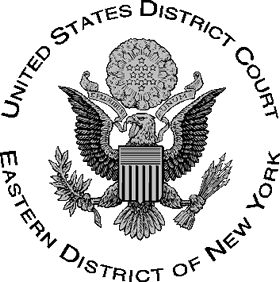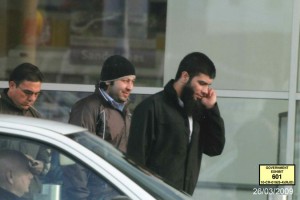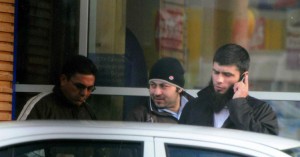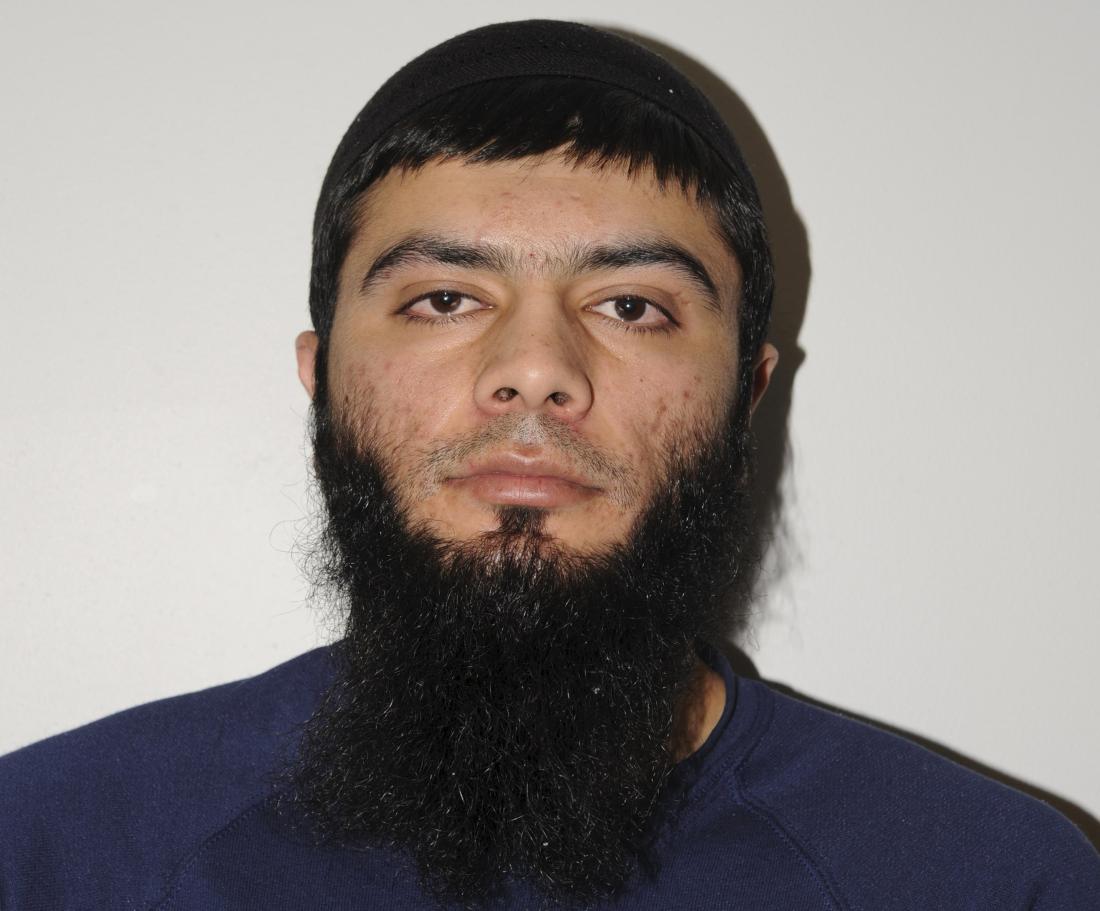NEW YORK
 A federal judge today sentenced an Al-Qaeda terrorist to 40 years in prison for his role in a terrorist plot against U.S. and Europe, officials said.
A federal judge today sentenced an Al-Qaeda terrorist to 40 years in prison for his role in a terrorist plot against U.S. and Europe, officials said.
U.S. District Judge Raymond J. Dearie sentenced Abid Naseer, 29, for leading a plan to carry out a bombing of a crowded shopping center in Manchester, England, during the Easter holiday as part of an international terror plot by al Qaeda, according to authorities.
Officials said the defendant and his accomplices came within days of executing a plot that was directed by senior al-Qaeda leaders in Pakistan.
Naseer is the eighth defendant to face charges in federal court related to the al-Qaeda plot, which also involved Adis Medunjanin, Najibullah Zazi and Zarein Ahmedzay, the three members of the cell that targeted New York City, officials said.
“This al-Qaeda plot was intended by the group’s leaders and Naseer to send a message to the United States and its allies,” said U.S. Attorney Robert Capers. “Today’s sentence sends an even more powerful message in response: terrorists who target the U.S. and its allies will be held accountable for their violent crimes to the full extent of the law.”
Authorities said Naseer was convicted in March after a three-week jury trial of providing material support to al-Qaeda, conspiring to provide material support to al-Qaeda and conspiring to use a destructive device in relation to a crime of violence.
“Abid Naseer was part of an al Qaeda conspiracy that targeted Western countries, including the United States and the United Kingdom, for terrorist attack,” said Assistant Attorney General John Carlin. “His conviction and sentence reflect our dedication to identifying and holding accountable those who seek to target the United States and its allies. I want to thank the many agents, analysts and prosecutors who are responsible for this successful result.”

A New York Times report stated that Naseer, a middle-class Pakistani and a skilled cricket player, joined Al Qaeda as an adult, according to trial testimony and evidence.
The Times report stated that Naseer moved to Manchester, and was arrested by British authorities there in 2009. The Qaeda scheme he was part of included the attack on the shopping center, along with coordinated attacks on the New York City subway system and a Danish newspaper.
The British authorities released him because of a lack of evidence. He was indicted in Federal District Court in Brooklyn in 2010, and he was extradited to New York in 2013, the Times reported.
“This case demonstrates the importance of a closely coordinated international law enforcement approach to an established terrorist network that knows no borders,” said New York City Police Commissioner William J. Bratton. “The manner in which these defendants communicated their deadly plans reinforces the need to allow law enforcement the necessary authority and tools to prevent these plots from succeeding in their objectives of mass destruction and death. I commend our local and international partners in preventing these acts and securing convictions of those responsible for plotting them.”
This is the evidence against Naseer that was presented in court:
- Around September 2008, al-Qaeda leaders in Pakistan recruited Medunjanin, Zazi and Ahmedzay, three friends from New York City, to conduct a suicide bombing attack in New York City.
- Those al-Qaeda leaders, including Adnan El-Shukrijumah and Saleh al-Somali, communicated with Zazi about the plot through an al-Qaeda facilitator named “Ahmad,” who was located in Peshawar, Pakistan.
- In early September 2009, after Medunjanin, Zazi and Ahmedzay had selected the New York City subway system as their target, Zazi emailed with “Ahmad” in Pakistan about the proper ingredients for the main charge explosive. which included flour and oil.
Zazi pleaded guilty to his role in the plot on Feb. 22, 2010; Ahmedzay pleaded guilty on April 23, 2010; and Medunjanin was convicted after trial on May 1, 2012, and was sentenced to life in prison.
Zazi and Ahmedzay are awaiting sentencing.

The investigation by authorities in the United States and United Kingdom revealed that “Ahmad” had also been communicating with Naseer earlier in 2009.
The evidence at trial established that Naseer and his Pakistani accomplices had been dispatched by al-Qaeda to the United Kingdom in 2006 in order to begin preparations for an attack in that country.
The defendant and his co-conspirators entered the United Kingdom on student visas but then immediately dropped out of the university in which they had enrolled.
The defendant, like Zazi, returned briefly to Peshawar in November 2008, at the same time Zazi and his co-conspirators were receiving weapons and explosives training from al-Qaeda in that region.
After returning to the United Kingdom, the defendant sent messages back and forth to the same email account that “Ahmad” was also using to communicate with the American-based al-Qaeda cell on behalf of Saleh al-Somali, al-Qaeda’s then-head of external operations.
In the messages, the defendant used coded language to refer to different types of explosives.
At the culmination of the plot, in early April 2009, Naseer told “Ahmad” that he was planning a large “wedding” for numerous guests during the upcoming Easter weekend and that “Ahmad” – whom he called “Sohaib” – should be ready.
Notably, Zazi testified that “Ahmad” had instructed him to use the same code of “marriage” to refer to the planned attack on the New York City subway and that Zazi emailed “Ahmad” that “the marriage is ready” just before he drove to New York in early September 2009 to conduct the attack.
On April 8, 2009, Naseer and several associates were arrested in the United Kingdom. In connection with these arrests, U.K. authorities conducted searches of the plotters’ homes as well as an internet café used by the defendant to send his messages to “Ahmad,” where they seized a large volume of electronic media.
As demonstrated at trial, a forensic review of the electronic media revealed that Naseer had downloaded several jihadi nasheeds, or anthems, calling for “death in large numbers,” according to authorities.
A document recovered from the raid on Usama bin Laden’s compound in May 2011 contained a letter from Saleh al-Somali to Bin Laden, written on April 16, 2009, that discussed the defendant and his accomplices’ arrests in the United Kingdom, officials said.
“Dispatched by al-Qaeda to the U.K. in 2006, Abid Naseer exploited the educational visa system not to improve his own life, but to take away the lives of many others ‘in large numbers,’” said FBI Assistant Director in Charge Diego Rodriguez. “Trained in weapons and explosives, he communicated in code to hide his evil intentions. Found guilty in a court of law, he has been spared the fate of death he wished upon others and will spend considerable time incarcerated in a country he and his co-conspirators failed to take down.”
The case was investigated by the following law enforcement agencies: the FBI’s Joint Terrorism Task Force. The Justice Department’s Office of International Affairs, Internal Revenue Service–Criminal Investigation in New York, the U.S. Marshals Service in Brooklyn and the law enforcement authorities in the United Kingdom and Norway, including the Greater Manchester Police and the Norwegian Police Security Service, also provided significant assistance.

